Lean Burn Flame Kernel Characterization for Different Spark Plug Designs and Orientations in an Optical GDI Engine
Abstract
:1. Introduction
2. Experimental Setup and Methodology
3. Heat Release Rate Analysis
4. Optical Setup and Methodology
5. Results
5.1. Cross-Flow Orientation, AFRrel Effect
5.2. Crossflow Orientation, Spark-Timing Effect
5.3. Uni-Flow and Counter-Flow Orientations
6. Conclusions
- For the cross-flow orientation and for all of the three AFRrel investigated, the single-electrode design resulted in higher R2 correlation coefficient values between the initial kernel position and flame displacement at CA5 compared to the double-electrode type, showing a higher sensitivity to the effects of the tumble fluid motion.
- For the cross-flow orientation, and for the leanest AFRrel investigated, the double-electrode geometry, which showed a lower sensitivity to the effects of the tumble fluid motion, also showed some noticeable improvements in terms of both IMEP and combustion stability in comparison with the single-electrode design.
- As far as the uni-/counter-flow orientations are concerned, a substantial lack of correlation between initial kernel position and flame displacement at CA5 was found for all electrode geometries and orientations, while some noticeable effects in terms of peak pressure were found only for the single-electrode geometry in counter-flow orientation.
Author Contributions
Funding
Institutional Review Board Statement
Conflicts of Interest
Abbreviations
| λ | Lambda |
| AFRrel | Air—fuel relative ratio |
| AST | After spark timing |
| ATDC | After top dead centre |
| BTDC | Before top dead centre |
| CA5 | Crank angle at 5% of burned mass fraction |
| CA50 | Crank angle at 50% of burned mass fraction |
| CAD | Crank angle degree |
| CCV | Cycle to cycle variability |
| COV | Coefficient of variation |
| DI | Direct injection |
| DISI | Direct-injection spark ignition |
| ETU | Engine timing unit |
| EVC | Exhaust valve closing |
| EVO | Exhaust valve opening |
| FFT | Fast Fourier transform |
| GDI | Gasoline direct injection |
| HRR | Heat release rate |
| ICE | Internal combustion engine |
| IMEP | Indicated mean effective pressure |
| IVC | Intake valve closure |
| IVO | Intake valve opening |
| LC | Luminous centroid |
| MFB | Mass fraction burned |
| SA | Spark advance |
| SI | Spark ignition |
| SOI | Start of injection |
| ST | Spark timing |
| TDC | Top dead centre |
| UEGO | Universal exhaust gas oxygen |
| WG | Wall-guided |
| WOT | Wide open throttle |
References
- Global Climate Change, Vital Signs of the Planet. Available online: https://climate.nasa.gov/effects/ (accessed on 15 February 2022).
- Lawrence, J.; Blackett, P.; Cradock-Henry, N.A. Cascading climate change impacts and implications. Clim. Risk Manag. 2020, 29, 100234. [Google Scholar] [CrossRef]
- European Green Deal: Commission PROPOSES transformation of EU Economy and Society to Meet Climate Ambitions. Available online: https://ec.europa.eu/commission/presscorner/detail/en/IP_21_3541 (accessed on 15 February 2022).
- World Resource Institute: COP26: Key Outcomes from the UN Climate Talks in Glasgow. Available online: https://www.wri.org/insights/cop26-key-outcomes-un-climate-talks-glasgow (accessed on 15 February 2022).
- Santos, N.D.S.A.; Roso, V.R.; Malaquias, A.C.T.; Baêta, J.G.C. Internal combustion engines and biofuels: Examining why this robust combination should not be ignored for future sustainable transportation. Renew. Sustain. Energy Rev. 2021, 148, 111292. [Google Scholar] [CrossRef]
- Conway, G.; Joshi, A.; Leach, F.; García, A.; Senecal, P.K. A review of current and future powertrain technologies and trends in 2020. Transp. Eng. 2021, 5, 100080. [Google Scholar] [CrossRef]
- Towoju, O.A. Fuels for Automobiles: The Sustainable Future. J. Energy Res. Rev. 2021, 7, 8–13. [Google Scholar] [CrossRef]
- Li, Q.; Liu, J.; Fu, J.; Zhou, X.; Liao, C. Comparative study on the pumping losses between continuous variable valve lift (CVVL) engine and variable valve timing (VVT) engine. Appl. Therm. Eng. 2018, 137, 710–720. [Google Scholar] [CrossRef]
- Liu, Q.; Liu, J.; Fu, J.; Li, Y.; Luo, B.; Zhan, Z.; Deng, B. Comparative study on combustion and thermodynamics performance of gasoline direct injection (GDI) engine under cold start and warm-up NEDC. Energy Convers. Manag. 2018, 181, 663–673. [Google Scholar] [CrossRef]
- Wei, H.; Yu, J.; Shao, A.; Zhou, L.; Hua, J.; Feng, D. Influence of injection strategies on knock resistance and combustion characteristics in a DISI engine. Proc. Inst. Mech. Eng. Part D J. Automob. Eng. 2018, 233, 2637–2649. [Google Scholar] [CrossRef]
- Rapp, V.; Killingsworth, N.; Therkelsen, P.; Evans, R. Lean-Burn Internal Combustion Engines; Academic Press: Cambridge, MA, USA, 2016; pp. 111–146. [Google Scholar] [CrossRef]
- Kalwar, A.; Agarwal, A.K. Lean-Burn Combustion in Direct-Injection Spark-Ignition Engines. In Alternative Fuels and Advanced Combustion Techniques as Sustainable Solutions for Internal Combustion Engines; Springer: Singapore, 2021; pp. 281–317. [Google Scholar] [CrossRef]
- Gong, C.; Si, X.; Liu, F. Comparative analysis on combustion and emissions between CO2 and EGR dilution GDI engine at half-load, stoichiometric and lean-burn conditions. Fuel 2021, 309, 122216. [Google Scholar] [CrossRef]
- Hattori, H.; Sogawa, Y.; Yanagisawa, N.; Hosoya, M.; Shoji, T.; Iwakiri, Y.; Yamashita, T.; Ikeda, T.; Tanaka, S.; Takahashi, K.; et al. Unregulated Emissions Evaluation of Gasoline Combustion Systems (Lean Burn/Stoichiometric DISI and MPI), State of the Art Diesel Aftertreatment Technologies (DPF, urea-SCR and DOC), and Fuel Qualities Effects (EtOH, ETBE, Aromatics and FAME); SAE Technical Paper; SAE International: Warrendale, PA, USA, 2007. [Google Scholar] [CrossRef]
- Scarcelli, R.; Richards, K.; Pomraning, E.; Senecal, P.K.; Wallner, T.; Sevik, J. Cycle-to-Cycle Variations in Multi-Cycle Engine RANS Simulations; SAE Technical Paper; SAE International: Warrendale, PA, USA, 2016. [Google Scholar] [CrossRef]
- Zhao, L.; Moiz, A.A.; Som, S.; Fogla, N.; Bybee, M.; Wahiduzzaman, S.; Mirzaeian, M.; Millo, F.; Kodavasal, J. Examining the role of flame topologies and in-cylinder flow fields on cyclic variability in spark-ignited engines using large-eddy simulation. Int. J. Engine Res. 2017, 19, 886–904. [Google Scholar] [CrossRef]
- Wadekar, S.; Janas, P.; Oevermann, M. Large-eddy simulation study of combustion cyclic variation in a lean-burn spark ignition engine. Appl. Energy 2019, 255, 113812. [Google Scholar] [CrossRef]
- Van Dam, N.; Sjöberg, M.; Som, S. Large-Eddy Simulations of Spray Variability Effects on Flow Variability in a Direct-Injection Spark-Ignition Engine Under Non-Combusting Operating Conditions; SAE Technical Paper; SAE International: Warrendale, PA, USA, 2018. [Google Scholar] [CrossRef] [Green Version]
- Sjerić, M.; Kozarac, D.; Tatschl, R. Modelling of early flame kernel growth towards a better understanding of cyclic combustion variability in SI engines. Energy Convers. Manag. 2015, 103, 895–909. [Google Scholar] [CrossRef]
- Pera, C.; Knop, V.; Reveillon, J. Influence of flow and ignition fluctuations on cycle-to-cycle variations in early flame kernel growth. Proc. Combust. Inst. 2015, 35, 2897–2905. [Google Scholar] [CrossRef]
- Irimescu, A.; Marchitto, L.; Merola, S.S.; Tornatore, C.; Valentino, G. Evaluation of different methods for combined thermodynamic and optical analysis of combustion in spark ignition engines. Energy Convers. Manag. 2014, 87, 914–927. [Google Scholar] [CrossRef]
- Martinez, S.; Irimescu, A.; Merola, S.S.; Lacava, P.; Curto-Riso, P. Flame Front Propagation in an Optical GDI Engine under Stoichiometric and Lean Burn Conditions. Energies 2017, 10, 1337. [Google Scholar] [CrossRef] [Green Version]
- Irimescu, A.; Merola, S.S.; Martinez, S. Influence of Engine Speed and Injection Phasing on Lean Combustion for Different Dilution Rates in an Optically Accessible Wall-Guided Spark Ignition Engine. SAE Int. J. Engines 2018, 11, 1343–1369. [Google Scholar] [CrossRef]
- Schirru, A.; Irimescu, A.; Merola, S.; d’Adamo, A.; Fontanesi, S. Flame Kernel Growth and Related Effects of Spark Plug Elec-trodes: Fluid Motion Interaction in an Optically Accessible DISI Engine. World Acad. Sci. Eng. Tech-Nology Int. J. Mech. Mechatron. Eng. 2020, 14, 95–103. [Google Scholar] [CrossRef]
- Geiger, J.; Pischinger, S.; Böwing, R.; Koß, H.-J.; Thiemann, J. Ignition Systems for Highly Diluted Mixtures in SI-Engines. SAE Trans. 1999, 108, 1099–1110. [Google Scholar] [CrossRef]
- Lee, Y.G.; Grimes, D.A.; Boehler, J.T.; Sparrow, J.; Flavin, C. A Study of the Effects of Spark Plug Electrode Design on 4-Cycle Spark-Ignition Engine Performance; SAE Technical Paper; SAE International: Warrendale, PA, USA, 2000. [Google Scholar] [CrossRef]
- Heywood, J.B. Internal Combustion Engine Fundamentals; McGraw Hill: New York, NY, USA, 1988. [Google Scholar]


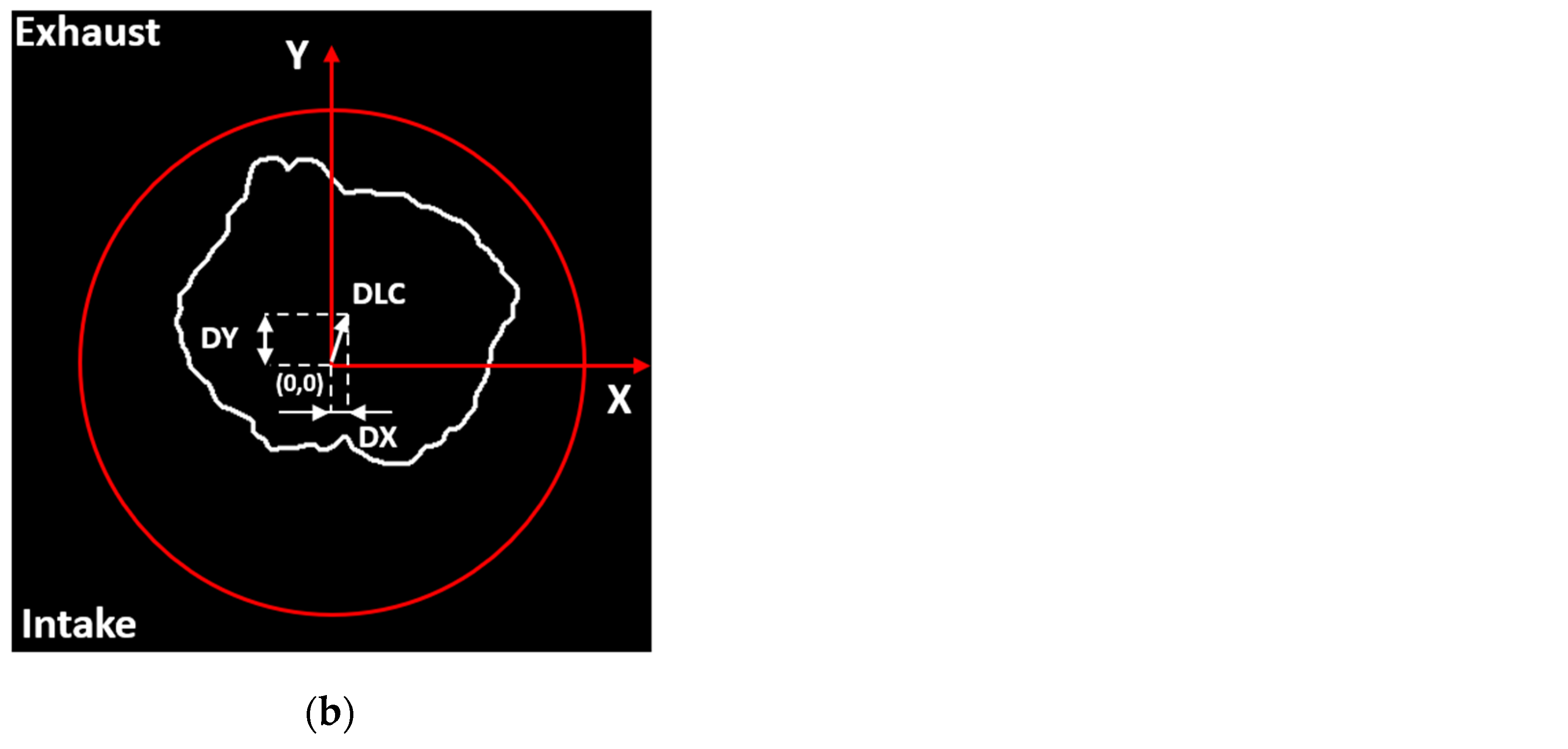
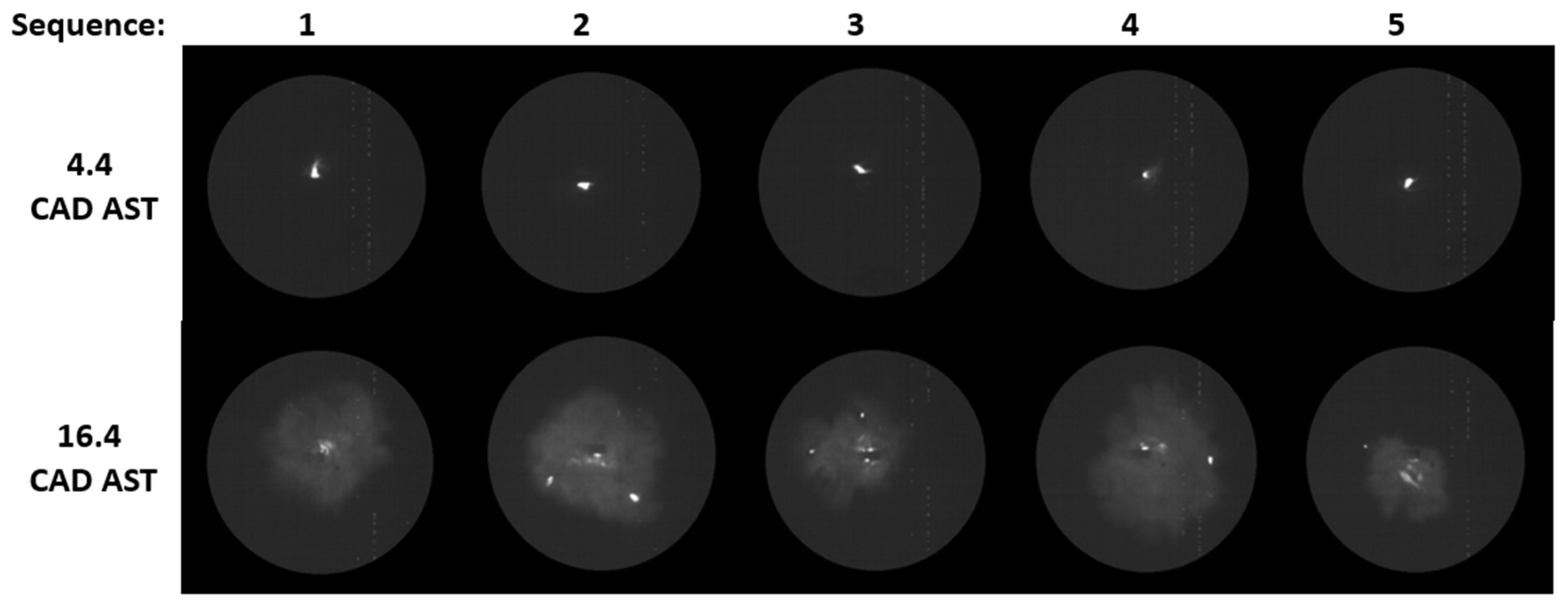
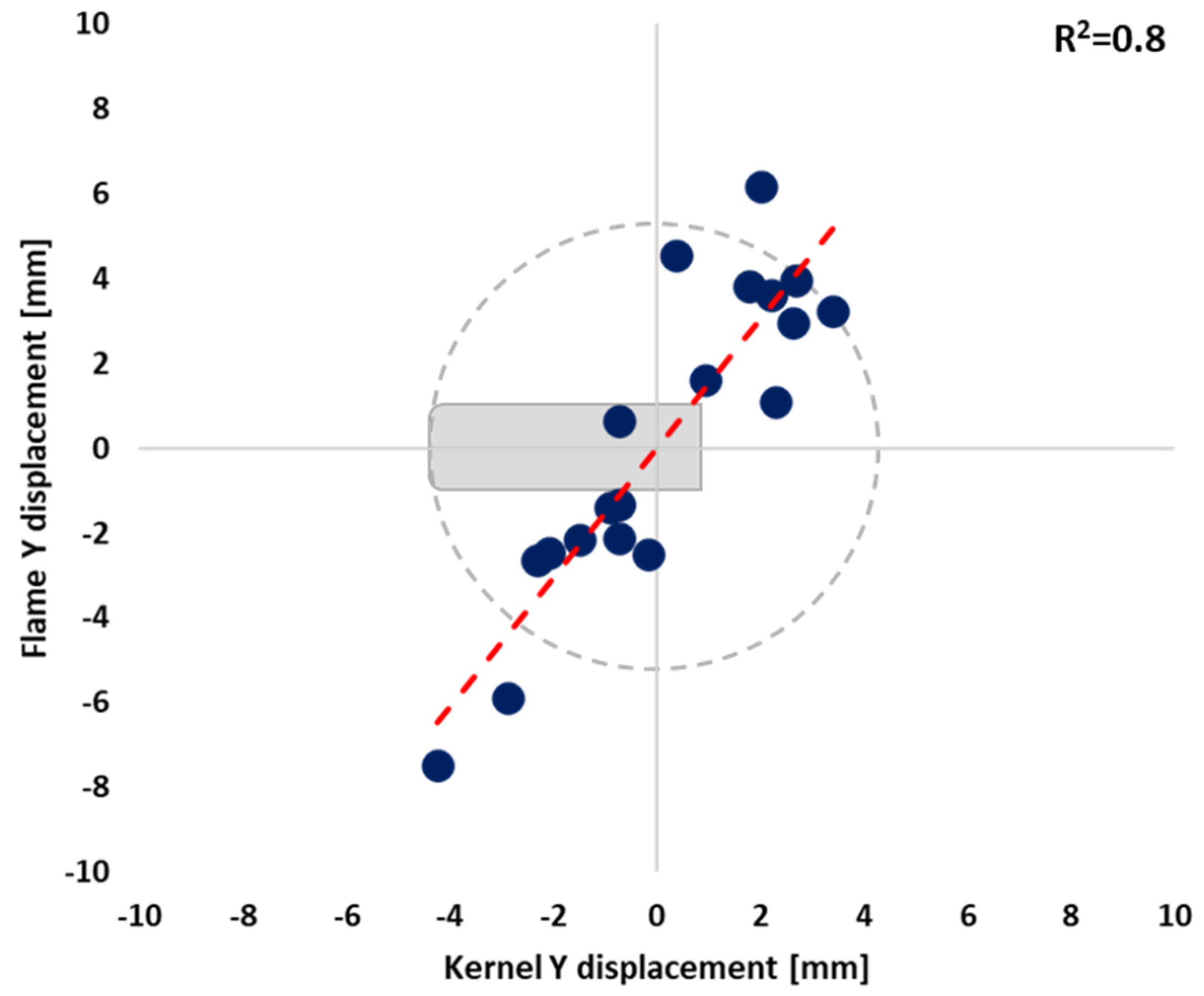
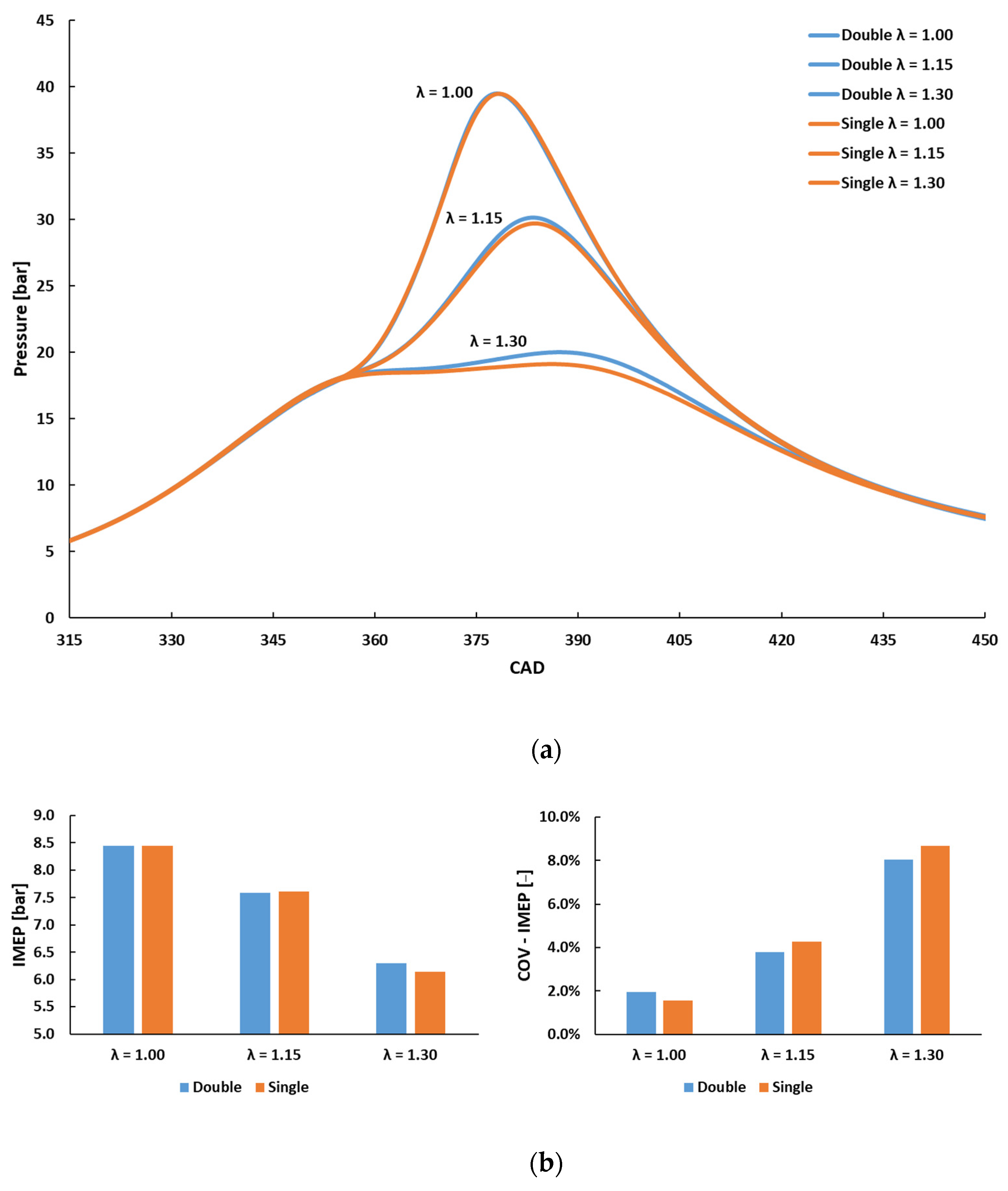
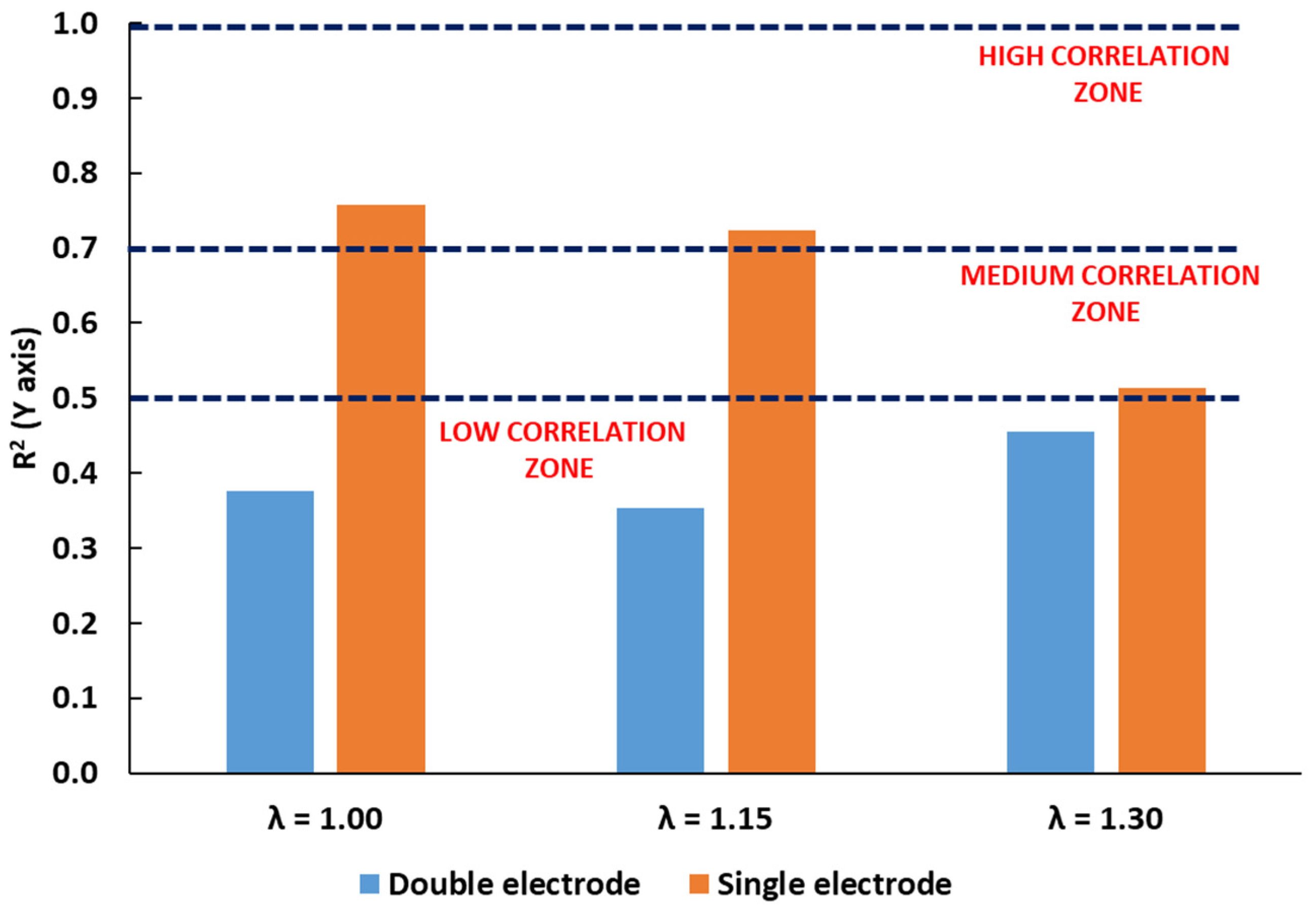
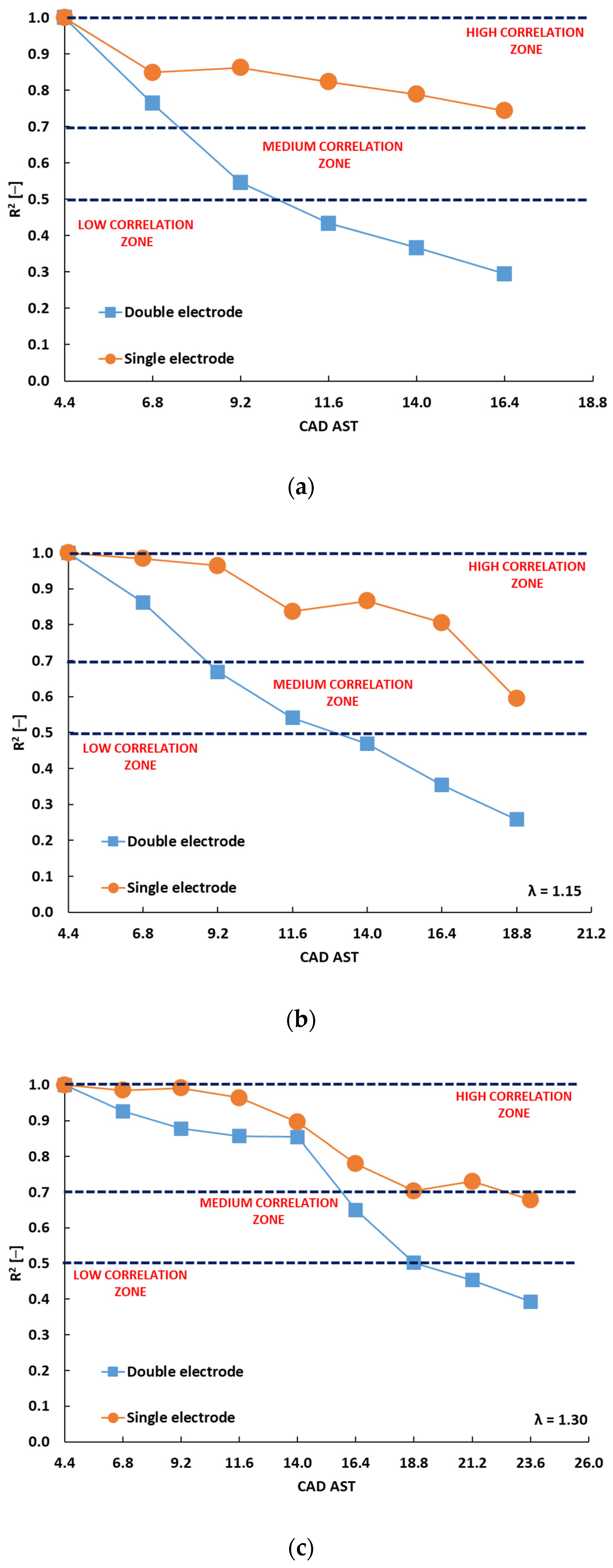



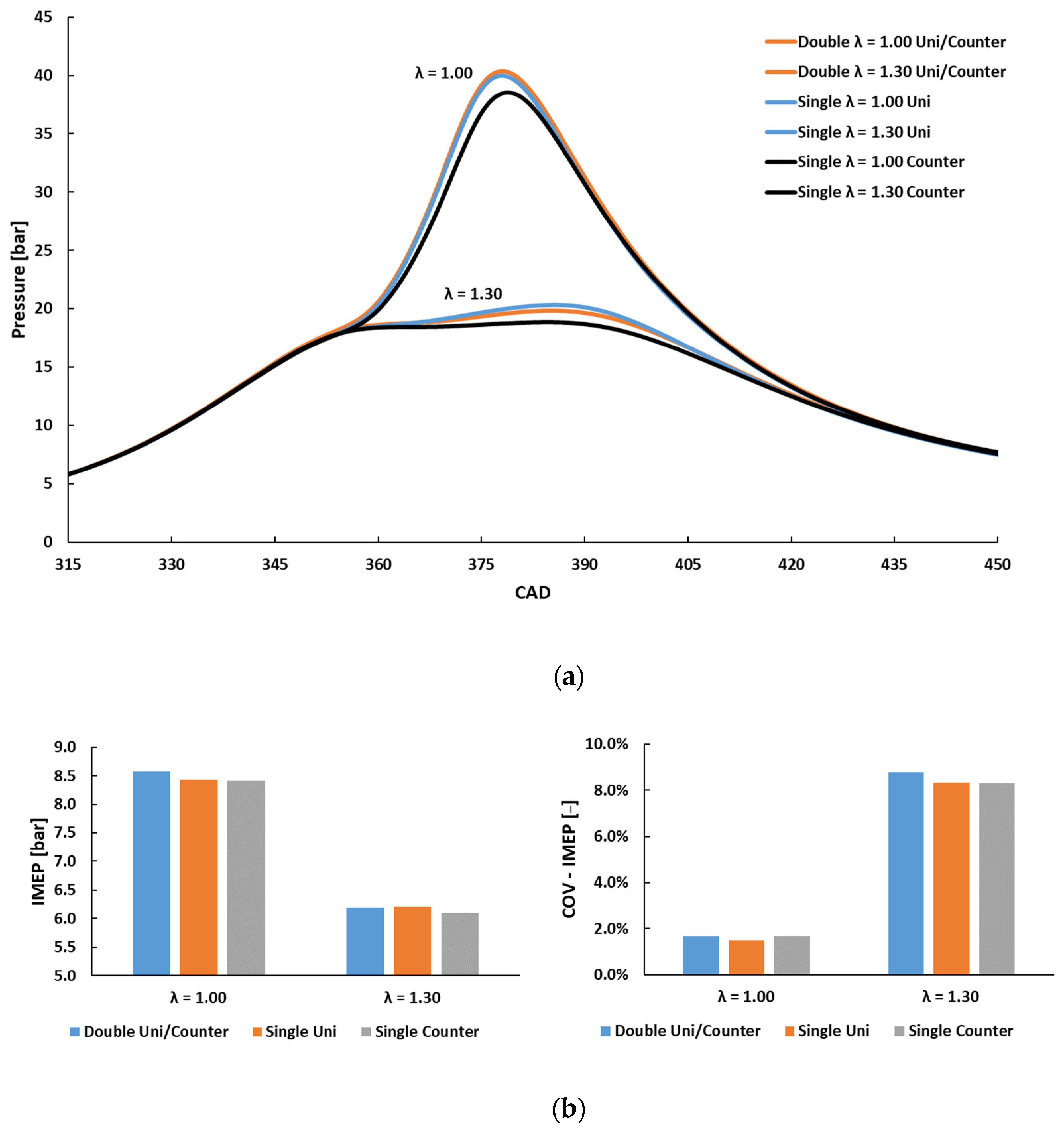

| Parameter | Description |
|---|---|
| Displacement | 399 cm3 |
| Stroke | 81.3 mm |
| Bore | 79 mm |
| Connecting rod | 143 mm |
| Compression ratio | 10:1 |
| Number of valves | 4 |
| Exhaust valves opening | 153 CAD ATDC |
| Exhaust valves closing | 360 CAD ATDC |
| Intake valves opening | 363 CAD BTDC |
| Intake valves closing | 144 CAD BTDC |
| Fuel injection system | DI WG |
| Start of injection | 300 CAD BTDC |
| Spark Plug Design | Orientation | Spark Advance [CAD BTDC] | λ |
|---|---|---|---|
| Single-electrode | Cross-flow | 8 | 1.15 |
| 12 | 1.00 | ||
| 1.15 | |||
| 1.30 | |||
| 16 | 1.15 | ||
| Uni-flow | 12 | 1.00 1.30 | |
| Counter-flow | 12 | 1.00 1.30 | |
| Double-electrode | Cross-flow | 8 | 1.15 |
| 12 | 1.00 | ||
| 1.15 | |||
| 1.30 | |||
| 16 | 1.15 | ||
| Uni-flow | 12 | 1.00 1.30 |
Publisher’s Note: MDPI stays neutral with regard to jurisdictional claims in published maps and institutional affiliations. |
© 2022 by the authors. Licensee MDPI, Basel, Switzerland. This article is an open access article distributed under the terms and conditions of the Creative Commons Attribution (CC BY) license (https://creativecommons.org/licenses/by/4.0/).
Share and Cite
Cecere, G.; Irimescu, A.; Merola, S.S.; Rolando, L.; Millo, F. Lean Burn Flame Kernel Characterization for Different Spark Plug Designs and Orientations in an Optical GDI Engine. Energies 2022, 15, 3393. https://doi.org/10.3390/en15093393
Cecere G, Irimescu A, Merola SS, Rolando L, Millo F. Lean Burn Flame Kernel Characterization for Different Spark Plug Designs and Orientations in an Optical GDI Engine. Energies. 2022; 15(9):3393. https://doi.org/10.3390/en15093393
Chicago/Turabian StyleCecere, Giovanni, Adrian Irimescu, Simona Silvia Merola, Luciano Rolando, and Federico Millo. 2022. "Lean Burn Flame Kernel Characterization for Different Spark Plug Designs and Orientations in an Optical GDI Engine" Energies 15, no. 9: 3393. https://doi.org/10.3390/en15093393
APA StyleCecere, G., Irimescu, A., Merola, S. S., Rolando, L., & Millo, F. (2022). Lean Burn Flame Kernel Characterization for Different Spark Plug Designs and Orientations in an Optical GDI Engine. Energies, 15(9), 3393. https://doi.org/10.3390/en15093393









